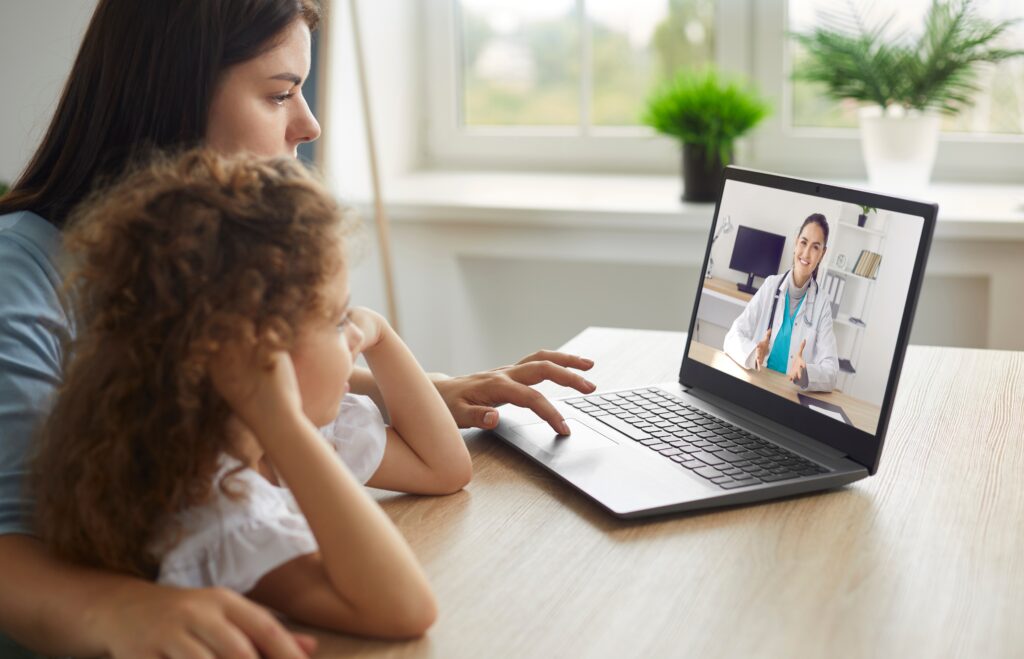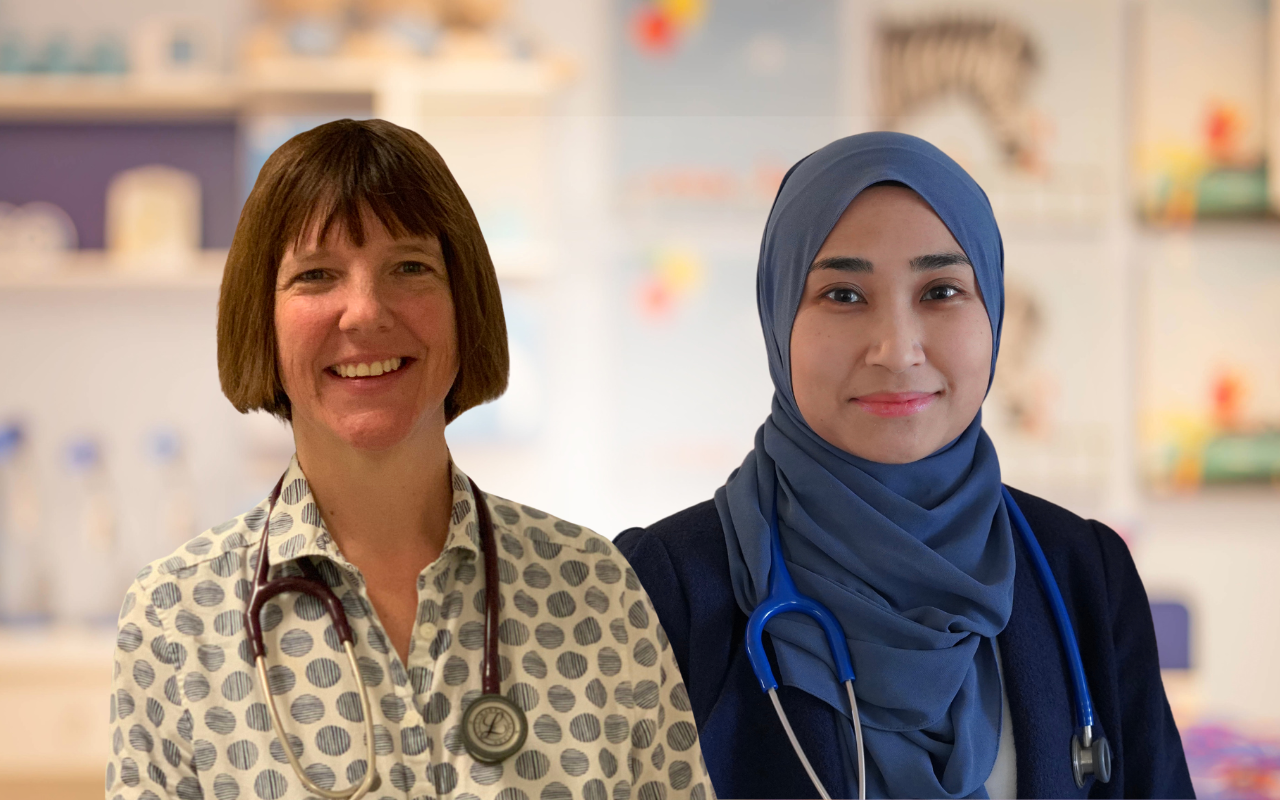The increase in hospital in the home admissions during the pandemic raises the broader question about how much acute paediatric care could be achieved outside of hospital settings, write Associate Professor Penelope Bryant and Dr Laila Ibrahim.
Before the coronavirus disease 2019 (COVID-19) pandemic, the management of acutely unwell children at home was increasingly being adopted to realise the well documented quality of life and financial benefits.
In 2020, as COVID-19 spread internationally, hospitals quickly became overwhelmed. By the time the World Health Organization declared the pandemic on 11 March 2020, there was a strong impetus to manage children in the community where possible. This was to reduce the burden on hospitals, to minimise health care-associated spread of infection, and because of the isolating impact of hospitalisation for children with COVID-19.
With the largest paediatric hospital in the home (HITH) program in Australasia, the Royal Children’s Hospital Melbourne already had processes before the pandemic that were applicable to managing COVID-19, including direct referrals from the emergency department (ED), being able to conduct telehealth reviews, and home oximetry.

We rapidly developed a pandemic response plan to accommodate increased patient numbers both with and without COVID-19 to relieve the burden on inpatient units. The plan also incorporated managing potential staff shortages, equipment in the home, risk of severe acute respiratory syndrome coronavirus 2 (SARS-CoV-2) transmission, communication and support for patients and staff.
We also developed a guideline for HITH eligibility and management of children with COVID-19 during the early days of the pandemic. Eligibility criteria for patients outlined the differing and complementary roles of hospital and HITH care, and the model of care included when to use an in-person versus telehealth visit and the role of monitoring and escalation.
We issued our pandemic plan to expand HITH on 13 March 2020, and the following day, the first child in Victoria was diagnosed with COVID-19. Uniquely in Australia, during these two years, Victoria experienced four waves of COVID-19 and this gave us the opportunity to analyse the role of HITH in a freely accessible study through the Murdoch Children’s Research Institute. We compared HITH activity before and during the pandemic, versus hospital care and with different variants. With the constantly changing nature of this highly transmissible virus, key lessons can be learnt from our experience.
First, HITH demand increased due to the pandemic incentive (push) and we proactively increased capacity further (pull) by being smart with our resources. This included prioritising clinical care by clinicians and identifying other staff who could take on non-clinical workload including those furloughed or working from home, being flexible with staff shift times and starting locations to meet need, converting visits to telehealth where possible, revisiting hospital-wide education and advertising so the HITH service was highly visible as an option, and maximising referrals by actively seeking patients on the wards. The result was a 21% increase in patients on HITH (7319 in two years, receiving over 35 000 visits) compared with the two years before the pandemic. This occurred during the large COVID-19 wave that Victoria experienced (July–September 2020) and again with the Delta wave (September–December 2021), but did not increase further with Omicron (December 2021 onwards).
During the COVID-19 pandemic, there were increases in medically complex patients (eg, children with cancer) and more direct admissions from the ED. Despite this increased complexity and acuity, admission durations were shorter and the rates of re-admission remained similarly low. The increase in overall HITH activity (not simply patients with COVID-19) when most hospitals had dramatically reduced admissions for children was due to a combination of factors, including the desire to retain inpatient capacity as one of only two paediatric COVID-19 referral hospitals in the state, and also HITH being an attractive alternative to hospital for families concerned about hospital outbreaks and the impact of visiting restrictions.
Second, by using available public health COVID-19 data sources, comparative hospital and HITH, admission rates could be determined for the first time. COVID-19 cases in Victoria were higher with the Delta variant during similar lockdown restrictions as with the original strain — Melbourne was famously the most locked-down city worldwide at 262 days of restrictions with essential needs only, one hour of outdoor exercise per day, and 8pm–6am curfew. Infection rates in children changed between variants, from three per 100 000 population per month with the original strain to 92 per 100 000 population per month with Delta, and to 593 per 100 000 population per month with Omicron. Although the proportion of children admitted to HITH was higher with Delta, hospital and HITH admission rates remained similarly low, neither rising above 1% at any time throughout the pandemic.
Third, most children with COVID-19, even those who are moderately unwell or have significant risk factors for severe disease, can be safely managed at home. Between March 2020 and March 2022, over 400 patients with COVID-19 were admitted to HITH, the majority through the ED or from public health. Approximately one-third had moderate symptoms (increased respiratory effort, dehydration) and two-thirds had milder symptoms with high risk comorbid conditions. No patients had sudden deterioration, and readmissions to hospital were low. Our study found that one-third of children with COVID-19 who were admitted directly to HITH had symptoms similar to those admitted to hospital, showing the potential for HITH to prevent even more hospital admissions. For COVID-19-positive children, there are additional benefits to being out of hospital, where prioritising safety means restrictions on visitors and children confined to rooms.
We published early guidance about which children would benefit most from home-based management for COVID-19, and have re-evaluated the guideline with each new variant. Through this process, we identified children who could safely be managed at home, even with the most severe variant to date (Delta). The challenge for HITH eligibility is identifying the cohort between the mildly unwell who could be cared for by parents/guardians at home and the more severely unwell needing hospital admission. Our program took a different approach to those monitoring all children with COVID-19, through a conscious effort to be judicious with health care resources for the sake of our already large cohort of patients without COVID-19 who still need home health care. Appropriate use of HITH resources should be for patients needing paediatric expertise and some hospital-level care, but whose management and monitoring intensity allows them to remain safely at home.
The increase in HITH admissions during the COVID-19 pandemic raises the broader question about how much acute paediatric care could be achieved outside of hospital settings. Based on our findings, we advocate that, where possible, children should be cared for at home rather than hospital, knowing the benefit to quality of life and severe impact on children’s mental health of this pandemic.
Associate Professor Penelope Bryant is a Consultant in Paediatric Infectious Diseases and Medical Lead of Hospital in the Home (HITH) at the Royal Children’s Hospital Melbourne, Clinician Scientist–Fellow at the Murdoch Children’s Research Institute, and Honorary Associate Professor at the University of Melbourne and paediatric representative of the HITH Society.
Dr Laila Ibrahim is a Consultant Paediatrician in General Medicine at the Royal Children’s Hospital Melbourne, Clinician Scientist–Fellow at the Murdoch Children’s Research Institute, and Honorary Lecturer at the University of Melbourne.
The statements or opinions expressed in this article reflect the views of the authors and do not necessarily represent the official policy of the AMA, the MJA or InSight+ unless so stated.
Subscribe to the free InSight+ weekly newsletter here. It is available to all readers, not just registered medical practitioners.
If you would like to submit an article for consideration, send a Word version to mjainsight-editor@ampco.com.au.

 more_vert
more_vert
Thanks for an important article. There are many lessons from COVID that we can carry forward to improve the way we care for patients.
The increasing acceptance of working from home now means that parents and carers have more capacity to supervise children recovering at home. The increased availability of simple technology like oximetry makes monitoring much easier.
We should also remember that the winter surges of respiratory viruses are largely predictable, notwithstanding the few disruptive years of the pandemic. Every family with young children or elderly parents can be prepared. Everyone can be up to date with influenza and COVID boosters. Everyone who has viral respiratory symptoms can avoid crowded social events, exercise cough hygiene, avoid sharing food utensils at home. Parents of children with asthma or prone to croup can have a script for Prednisolone ready in advance of need. Elderly people prone to chest infections and UTIs can gave antibiotics on-hand at home, with a written plan for when to take them. Families with children in group child care can gave a stock of ondansetron wafers on-hand, and suitable electrolyte replacement drinks. Parents and carers can have a refresher on how to check for respiratory distress and hydration issues.
Let’s not revert to the old ways, where every pathway led to the hospital. There are so many ways we can assist families to cope with predictable common illnesses, without panic, and using their own insights and resources, with out advice and back-up.